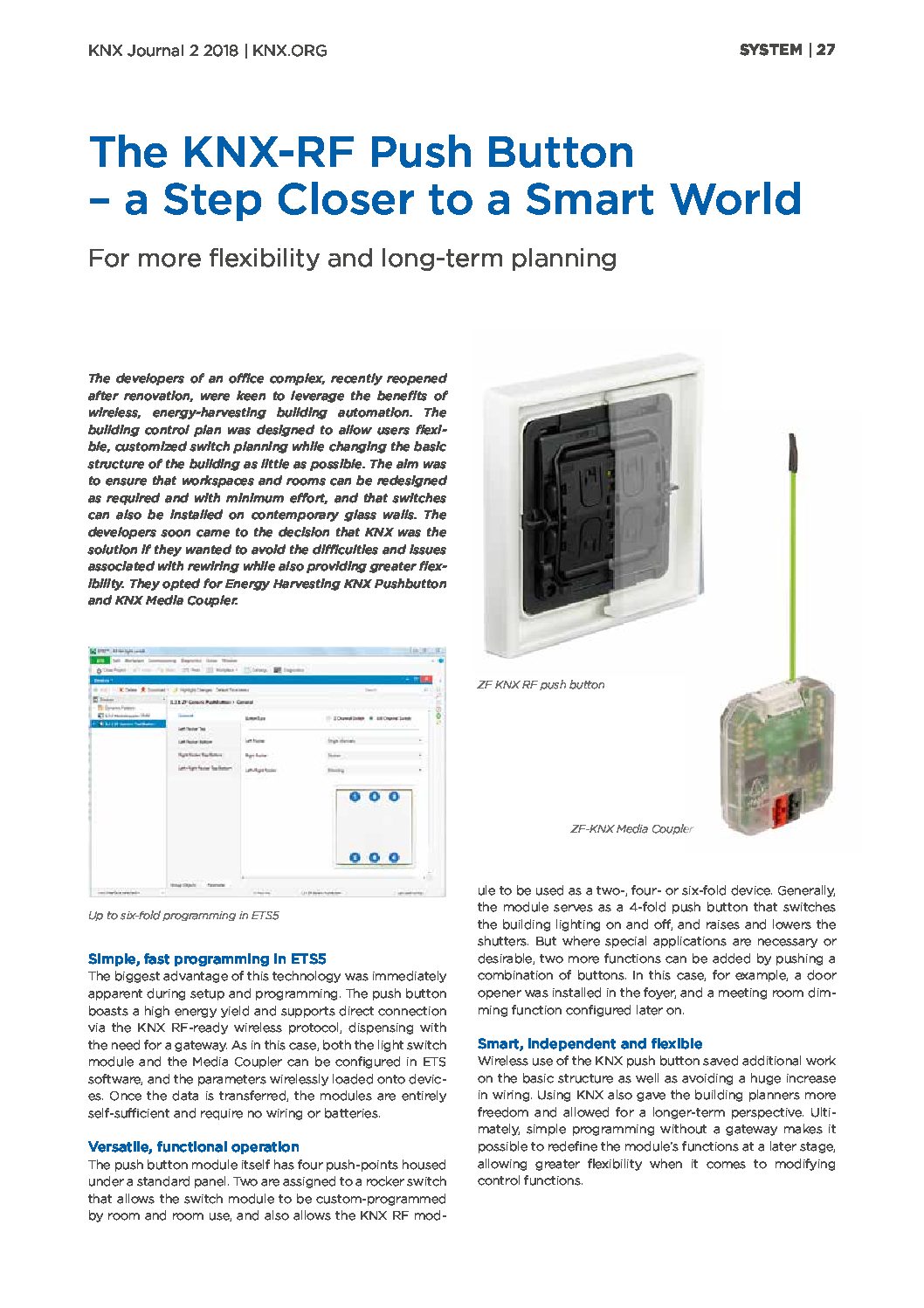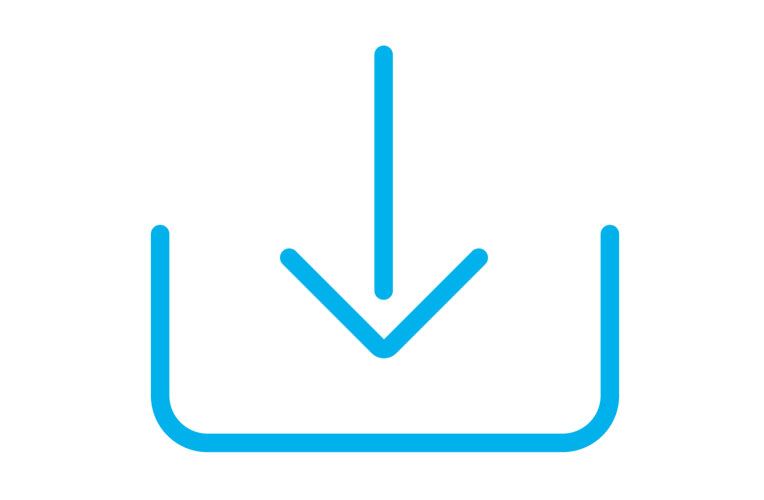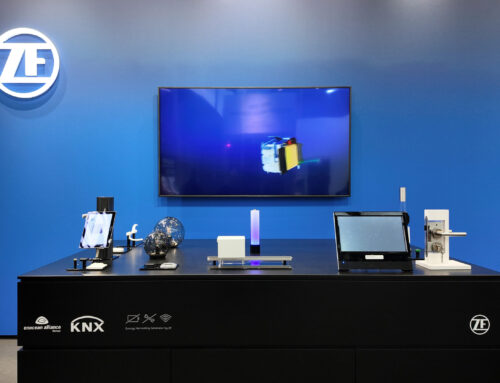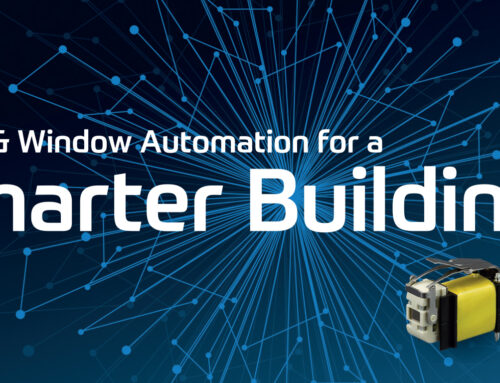
A Step Closer To A Smart World
As available in the 2/2018 edition of KNX Journal
The KNX-RF Push Button – a Step Closer to a Smart World
For more flexibility and long-term planning
The developers of an office complex, recently reopened after renovation, were keen to leverage the benefits of wireless, energy-harvesting building automation. The building control plan was designed to allow users flexible, customized switch planning while changing the basic structure of the building as little as possible. The aim was to ensure that workspaces and rooms can be redesigned as required and with minimum effort, and that switches can also be installed on contemporary glass walls. The developers soon came to the decision that KNX was the solution if they wanted to avoid the difficulties and issues associated with rewiring while also providing greater flexibility. They opted for Energy Harvesting KNX Pushbutton and KNX Media Coupler.
Simple, fast programming in ETS5
The biggest advantage of this technology was immediately apparent during setup and programming. The push button boasts a high energy yield and supports direct connection via the KNX RF-ready wireless protocol, dispensing with the need for a gateway. As in this case, both the light switch
module and the Media Coupler can be configured in ETS software, and the parameters wirelessly loaded onto devices. Once the data is transferred, the modules are entirely self-sufficient and require no wiring or batteries.
Versatile, functional operation
The push button module itself has four push-points housed under a standard panel. Two are assigned to a rocker switch that allows the switch module to be custom-programmed by room and room use, and also allows the KNX RF mod-ule to be used as a two-, four- or six-fold device. Generally,
the module serves as a 4-fold push button that switches the building lighting on and off, and raises and lowers the shutters. But where special applications are necessary or desirable, two more functions can be added by pushing a combination of buttons. In this case, for example, a door
opener was installed in the foyer, and a meeting room dimming function configured later on.
Smart, independent and flexible
Wireless use of the KNX push button saved additional work on the basic structure as well as avoiding a huge increase in wiring. Using KNX also gave the building planners more freedom and allowed for a longer-term perspective. Ultimately, simple programming without a gateway makes it
possible to redefine the module’s functions at a later stage, allowing greater flexibility when it comes to modifying control functions.








